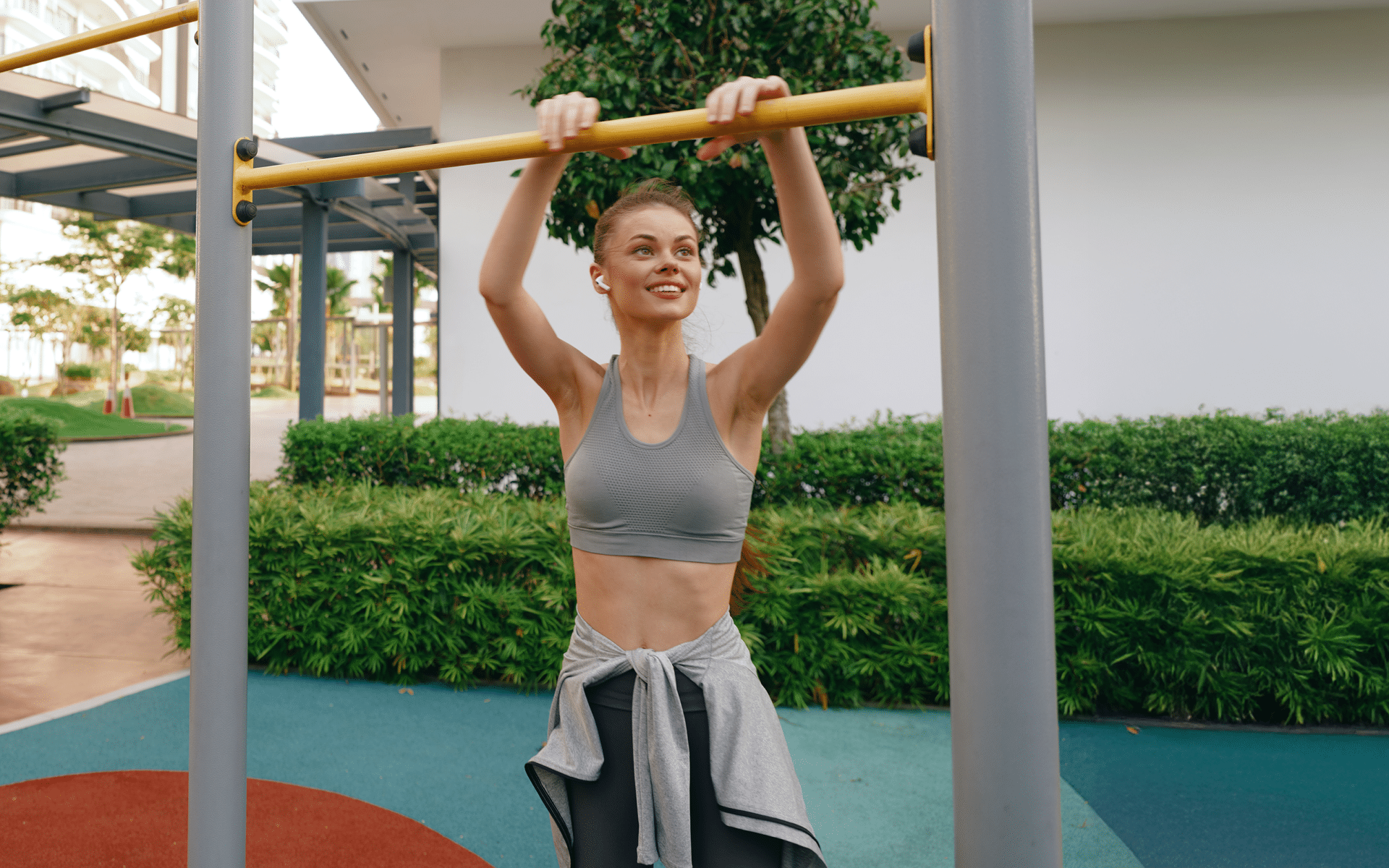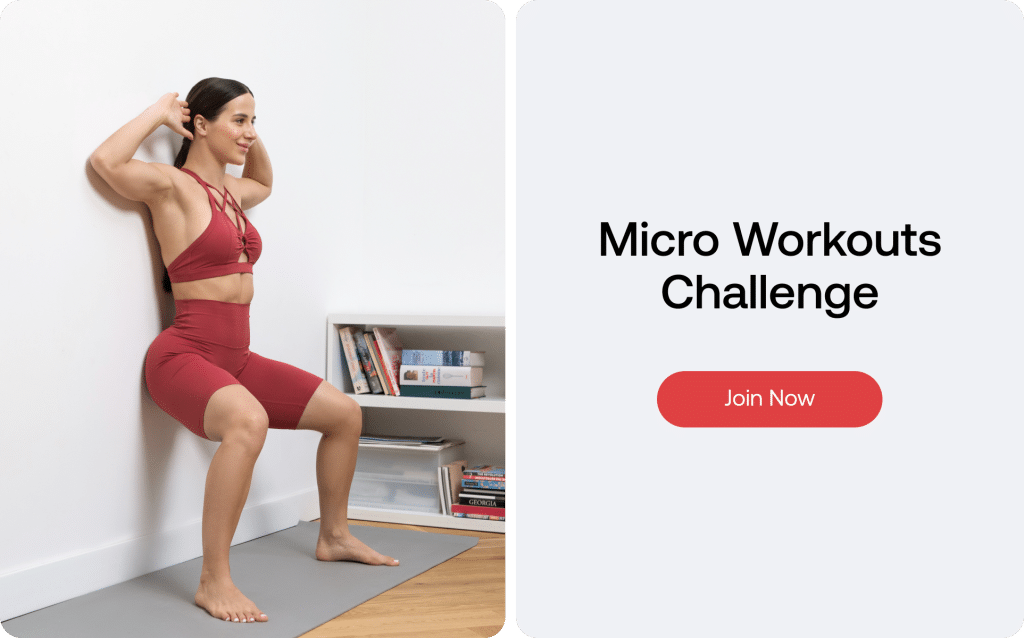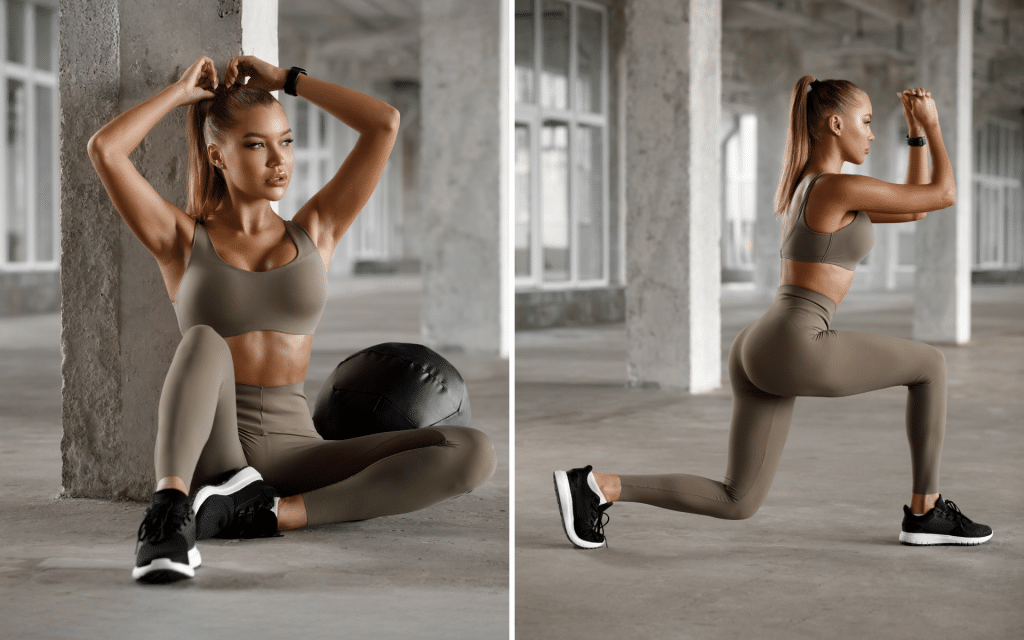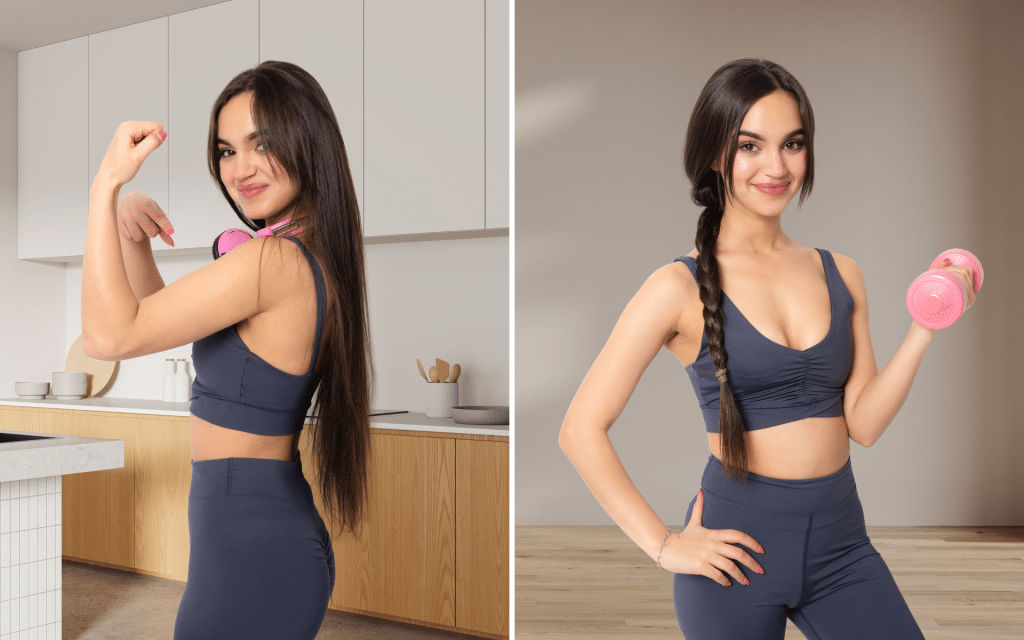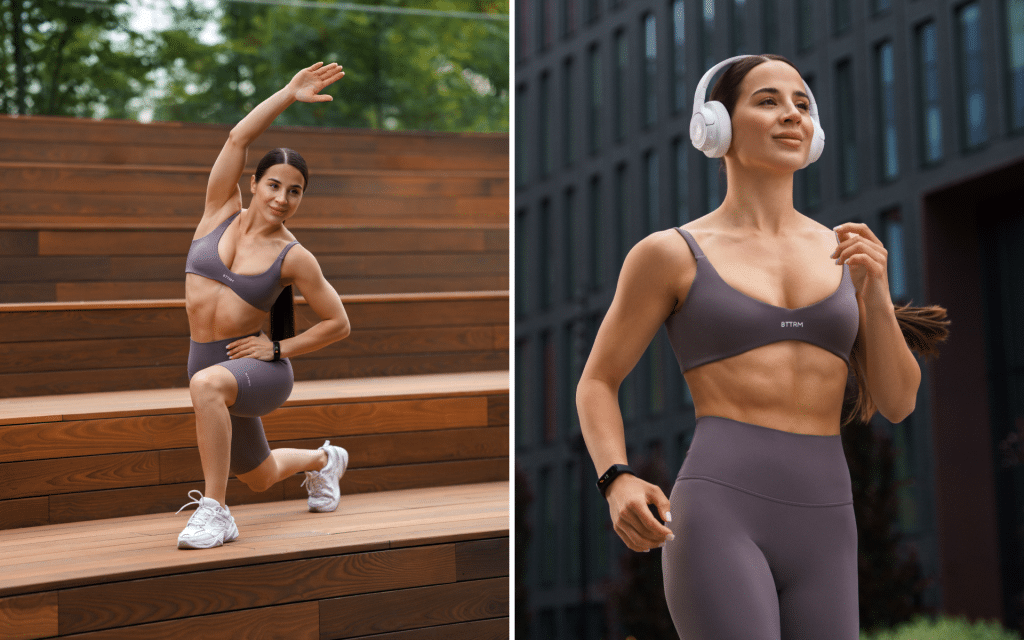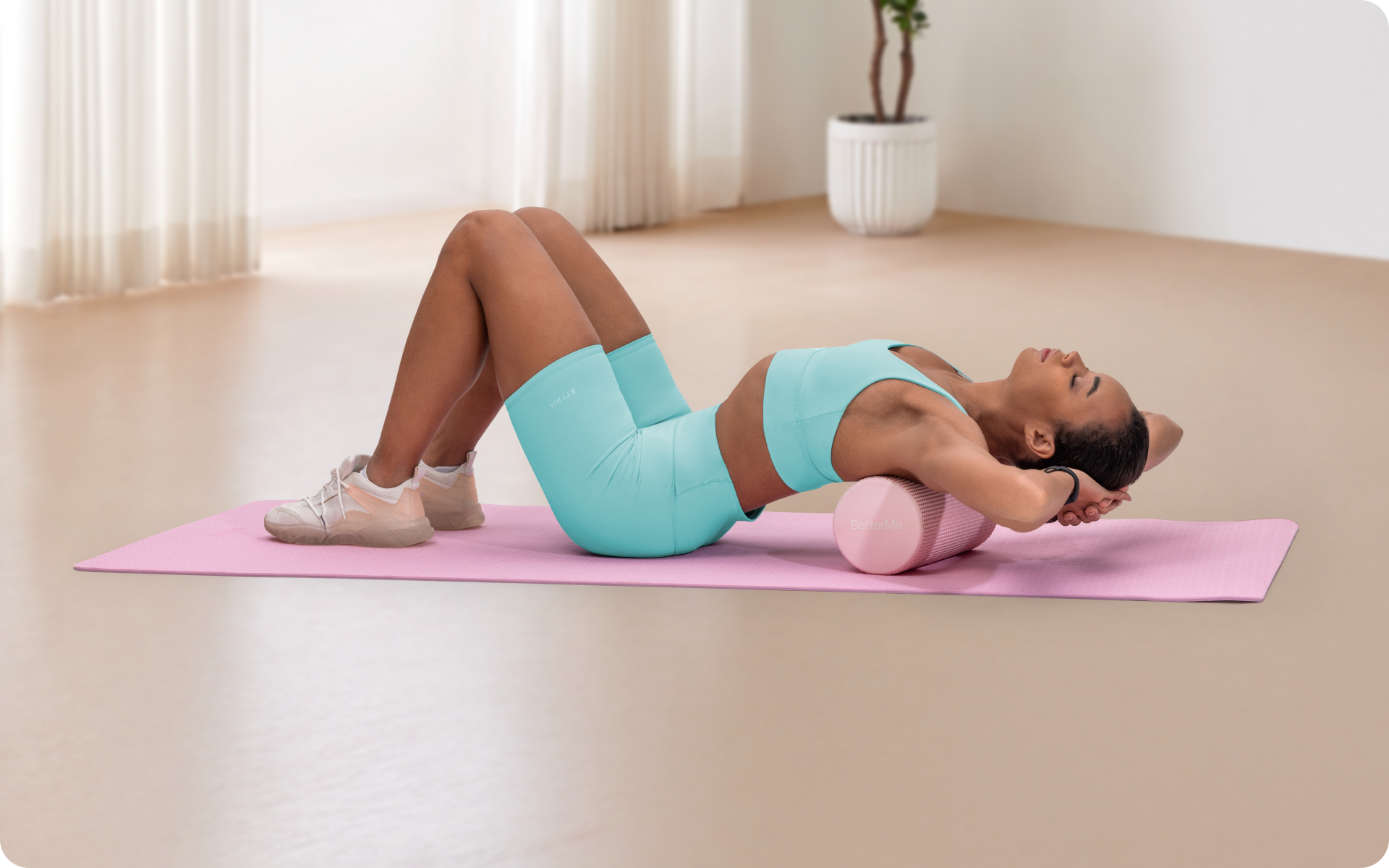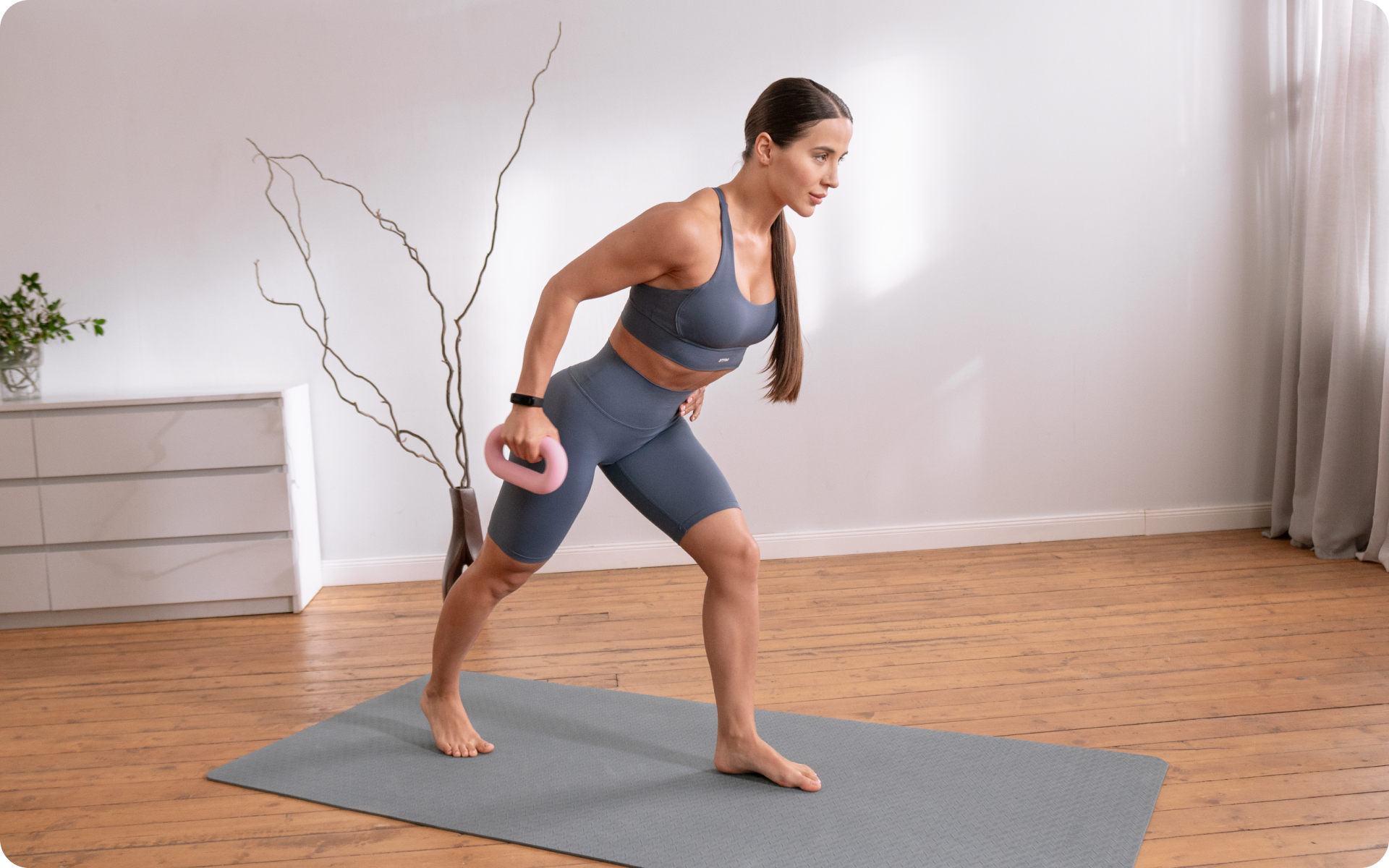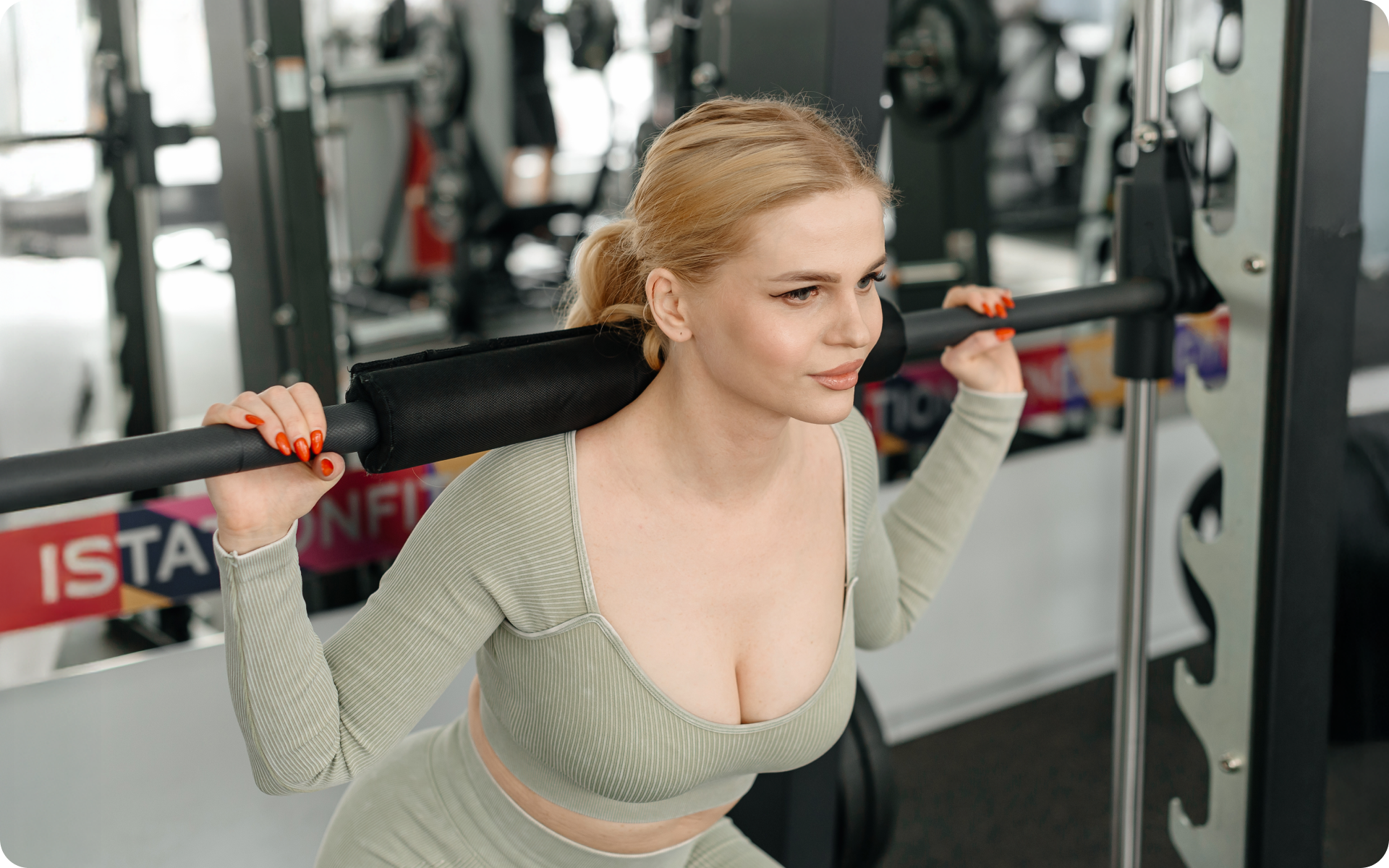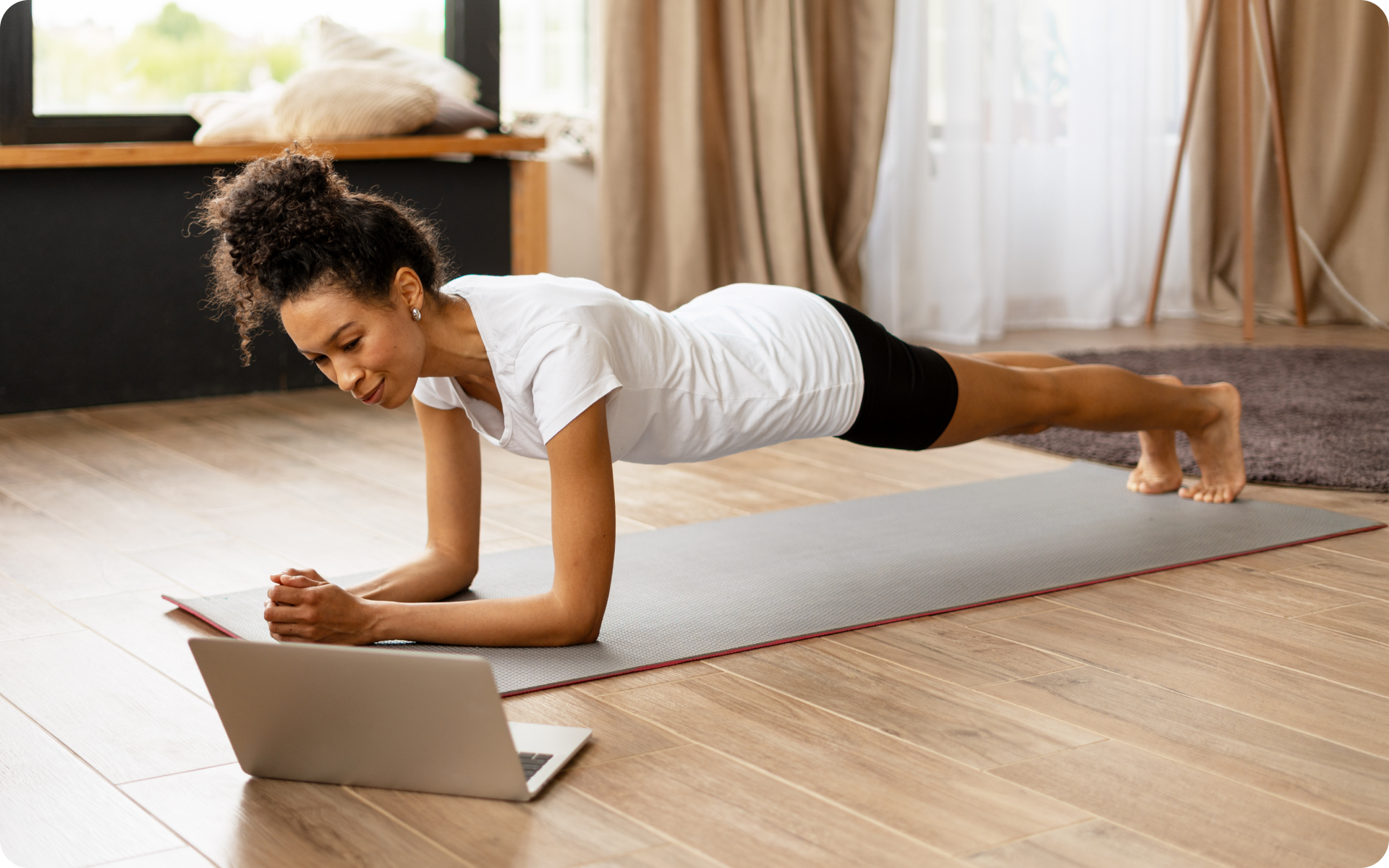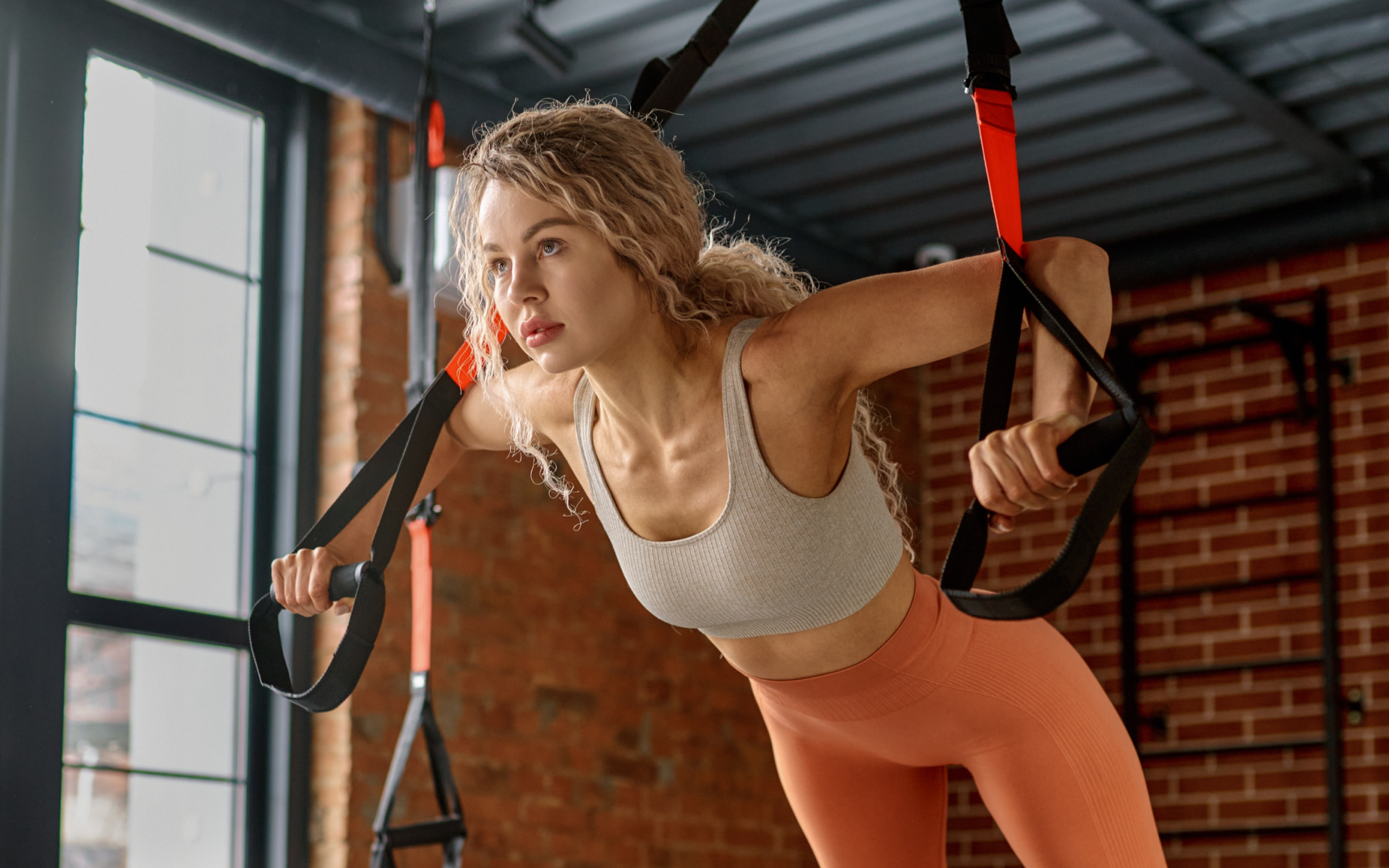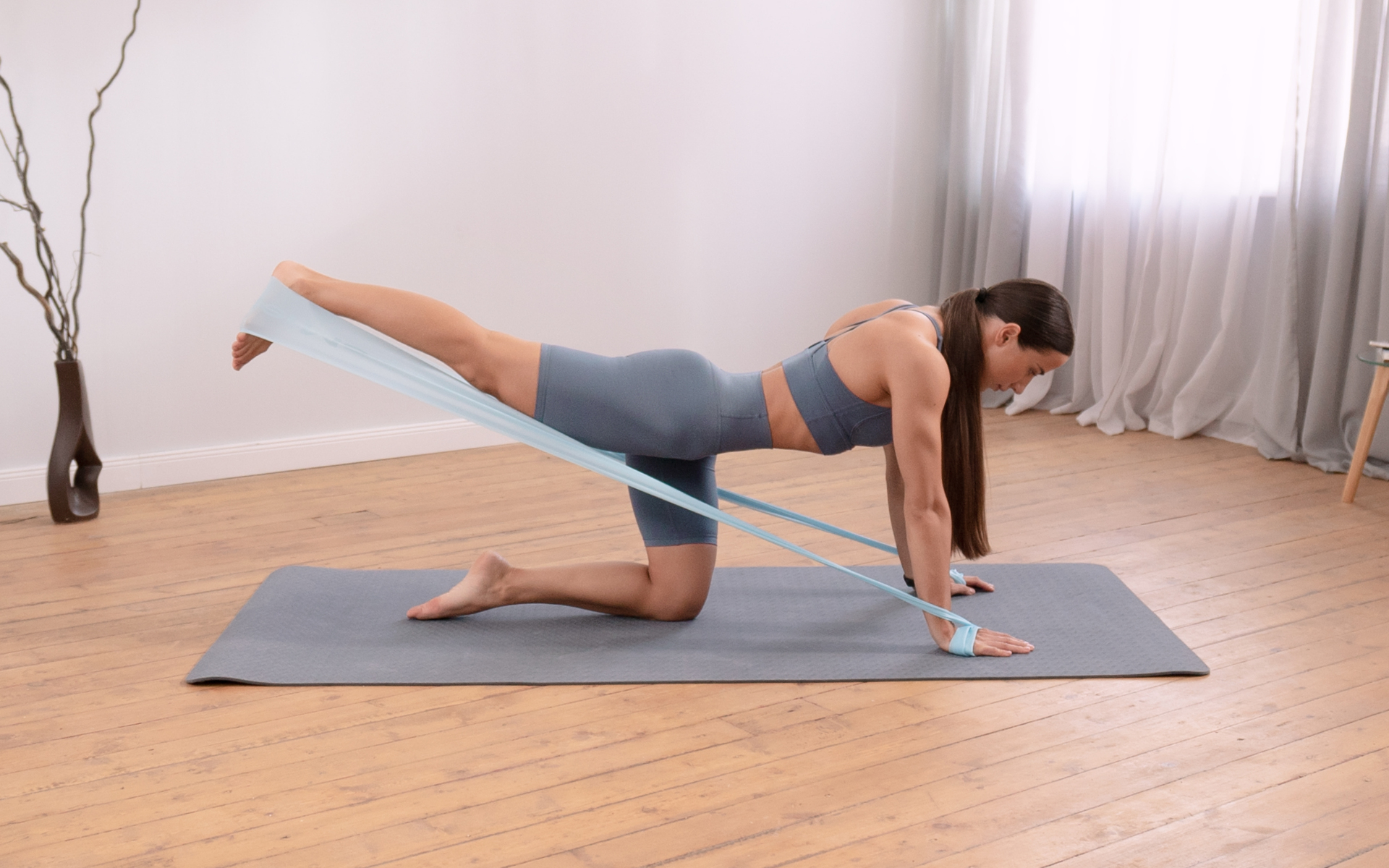Pull-ups are challenging yet rewarding exercises that build upper-body and core strength. While mastering them can seem intimidating, especially for beginners, with the right approach, they become achievable.
If you want to learn how to do a pull-up, keep reading. We will provide plenty of tips and tricks to help.
Are Pull-Ups Hard To Learn?
Knowing how to do pull-ups for beginners is challenging because they require a lot of upper-body strength and involve activating multiple muscle groups simultaneously, including the back, shoulders, arms, and core (1).
How To Train Pull-Ups If You Can’t Do One?
- Assisted Pull-Up Machine
Assisted pull-up machines are a great way to learn the pull-up movement while building the strength to perform naturally.
They involve standing on a platform that reduces your weight by specific amounts (2).
- Resistance Bands
You can similarly use resistance bands for an assisted pull-up machine.
By attaching them to the bar and then putting your knee through the band or even standing on the band, you can reduce your weight to make the pull-ups easier. These are perfect for at-home workouts.
- Negative Pull-Ups
Jump up, bring your chin to the top of the bar, and slowly lower yourself to strengthen your pulling muscles.
These are especially good if you can’t access assisted pull-up machines or resistance bands. You can use a platform to help you get up to the bar, then grab on and slowly control your body as your elbows extend.
- Pull-Up Alternatives
Use exercises like:
- Inverted rows
- Bodyweight rows under a sturdy table
- Dumbbell rows to build the strength needed to perform pull-ups
These exercises target the same muscles as pull-ups (3).
How Long Does It Take To Be Able To Do A Pull-Up?
The time required to achieve a pull-up varies depending on:
- Your consistency
- Your fitness level
- Starting body weight
- Training frequency
It can take 4–12 weeks of focused training or even longer. Therefore, staying motivated, taking breaks, and finding the fun in your workouts are essential to accomplishing your goals (4).
How Do I Build Strength To Do Pull-Ups?
- Lat Pulldowns
Mimicking the pulldown motion on a lat-pulldown machine can help strengthen your lats, which are essential to the pull-up (5).
- Dead Hangs
Hanging from the bar without attempting to pull yourself up can help build grip and shoulder strength. It also decompresses the spine, helping to stretch the entire body.
- Push-ups
Push-ups will strengthen your chest, shoulders, and triceps, which are secondary muscles in pull-ups.
If you wish to free yourself from all the extra pounds that have been weighing you down for way too long, start using the BetterMe: Health Coaching app and overhaul your entire life!
Do Push Ups Increase Pull-Ups?
Push-ups alone won’t directly improve pull-up strength, but they complement pull-up training by developing supporting muscles, primarily in the chest, which help stabilize the shoulders (6).
How To Train To Do A Pull-Up At Home
Learning how to do pull-ups for beginners at home involves gradually building the necessary upper body and core strength.
Strengthening Key Muscles
Inverted Rows Using A Sturdy Table Or Bar
- Lie underneath a sturdy surface, grip it, and pull your chest toward the bar.
- Reps: 3–4 sets of 8–12.
Bent-Over Rows Using Dumbbells Or Resistance Bands
- Hold a barbell or resistance band with an overhand or neutral grip.
- Bend at your hips to lower your torso until it’s nearly parallel to the ground, with your knees slightly bent.
- Pull the weight toward your lower ribs or waist.
- Reps: 3 sets of 10–12.
Plank Holds
- Strengthen your core for pull-up stability.
- Reps: 3 sets of 30–60 seconds.
Read more: Does Planking Burn Fat? Unveiling the Truth of the Famous Plank vs. Fat Debate
Negative Pull-Ups
- Use a chair or sturdy surface to jump or step into the top pull-up position with your chin above the bar.
- Slowly lower yourself down for 3–5 seconds. Then, get back on that sturdy surface to grab the bar again for the next rep.
- Reps: 3–5 sets of 4–6 negatives.
Resistance Bands
- Loop a resistance band around the bar and place your knee or foot in the band.
- Perform assisted pull-ups.
- Reps: 3 sets of 6–10.
Bicep Curl
- Use dumbbells, a barbell, resistance bands, or a kettlebell.
- Bend your elbows to curl the weights up toward your shoulders.
- Perform 3–4 sets of 8–12 reps with moderate weights.
Incorporate Grip Strength Training
Dead Hangs
- Hang from a pull-up bar for as long as you can.
- Start with 10–15 seconds and work up to 30–60 seconds.
Farmers Carry
- Use dumbbells, kettlebells, or any heavy objects with comfortable grips.
- Hold one weight in each hand and take small, controlled steps.
- Walk as far as you can, keeping your back straight with your core engaged, before returning the weights to the floor.
Practice Proper Form
- Good form will help prevent injury and ensure the work you are doing is more effective.
- Use an overhand grip slightly wider than shoulder-width.
- Hang with your arms fully extended and your shoulders engaged.
- Pull your chest toward the bar by engaging your lats and biceps until your chin is above the bar.
- Keep your core tight to avoid swinging.
- Lower yourself in a controlled manner until your arms are back at the starting position (7).
BetterMe: Health Coaching app helps you achieve your body goals with ease and efficiency by helping to choose proper meal plans and effective workouts. Start using our app and you will see good results in a short time.
How To Train To Do A Pull-Up Female
Learning how to do pull-ups for beginners girls and women involves unique challenges and considerations due to physiological differences.
Any female at any age can learn to do a pull-up with tailored training and consistent effort.
Females face challenges during training because they have less upper body mass and grip strength, limiting pull-up performance.
Therefore, females must focus on building up the muscle groups they use to perform pull-ups before they can effectively perform many pull-ups (8).
Read more: Does Wall Pilates Really Work For Weight Loss?
Pull Up Alternative No Bar
Inverted Rows Using A Table
- Lie under a sturdy table or surface.
- Grip the edge and pull your chest toward it, keeping your body straight.
- Lower yourself back down with control.
Towel Rows
- Tie a sturdy towel around a door handle or anchor it securely.
- Hold both ends of the towel, lean back, and pull yourself toward the anchor point.
Resistance Band Rows
- Anchor a resistance band to a secure surface at chest height. You can also sit on the floor with your legs straight and then wrap the resistance band around the bottom of your feet.
- Hold both ends and step back to create tension.
- Pull the bands toward you, squeezing your shoulder blades together.
Superman Pull
- Lie face down on the floor with your arms extended in front of you.
- Lift your arms, chest, and legs slightly off the ground (Superman position).
- Pull your arms back toward your shoulders as if performing a pull-up.
Backpack Rows
- Fill a backpack with books or other heavy items.
- Bend at your hips and knees, keeping your back straight.
- Hold the backpack with both hands and pull it toward your chest.
If you struggle to do a pull-up, it likely means you need to strengthen one or more key muscle groups, including your back, biceps, or core. Grip strength and proper form are also key factors. However, remember that practice makes perfect, and developing strength takes time, so do not feel defeated if you can’t do a specific number of pull-ups. Not at all. Pull-ups require significant and specific strength, and many beginners struggle with them, especially if they are overweight. However, consistent training and a good diet will help you progress. If you’re practicing pull-ups, start with 2–3 weekly sessions. Focus on quality over quantity and avoid overtraining (9). Three sets of 10 is an excellent goal for overall strength and endurance. However, beginners should start with smaller sets and gradually increase volume as strength improves. The number of calories you burn doing pull-ups will depend on several factors, including your weight, age, and intensity. However, most people can expect to burn 5 – 10 calories per minute while doing 10 pull-ups per minute (10).Frequently Asked Questions
Why can’t I do pull-ups?
Am I weak if I can’t do a pull-up?
How many pull-ups a day?
Are three sets of 10 pull-ups good?
How many calories do pull-ups burn?
The Bottom Line
Mastering pull-ups may feel like a challenging journey, but it’s entirely achievable with consistent effort and the right training plan. Remember that progress takes time, so it’s important to celebrate the milestones along the way.
Whether using resistance bands, practicing negative pull-ups, or doing rows with a backpack, each step brings you closer to conquering your first pull-up.
DISCLAIMER:
This article is intended for general informational purposes only and does not serve to address individual circumstances. It is not a substitute for professional advice or help and should not be relied on for making any kind of decision-making. Any action taken as a direct or indirect result of the information in this article is entirely at your own risk and is your sole responsibility.
BetterMe, its content staff, and its medical advisors accept no responsibility for inaccuracies, errors, misstatements, inconsistencies, or omissions and specifically disclaim any liability, loss or risk, personal, professional or otherwise, which may be incurred as a consequence, directly or indirectly, of the use and/or application of any content.
You should always seek the advice of your physician or other qualified health provider with any questions you may have regarding a medical condition or your specific situation. Never disregard professional medical advice or delay seeking it because of BetterMe content. If you suspect or think you may have a medical emergency, call your doctor.
SOURCES:
- How to learn pull-ups? – California Learning Resource Network (2024, clrn.org)
- Assisted Pull Ups – How To Do, Benefits & Muscles Worked – AMMFitness (2023, ammfitness.co.uk)
- ACE Research: Best Back Exercises | ACE Fitness (2018, acefitness.org)
- Building Muscle: How Long Until Noticeable Results? (2024, verywellhealth.com)
- Back exercises in 15 minutes a day – Mayo Clinic (2023, mayoclinic.org)
- Do Push Ups Help With Pull-Ups: Here’s Why Not – Inspire US (2023, inspireusafoundation.org)
- Understanding the Importance of Proper Form in Weight Lifting – Fitterpedia (2024, fitterpedia.org)
- Time course for strength and muscle thickness changes following upper and lower body resistance training in men and women | European Journal of Applied Physiology (2000, springer.com)
- How Many Pull Ups Should I Be Able To Do? Average Pull-Ups By Age + Sex (2024, marathonhandbook.com)
- Pull Up Calories Calculator – Calculator Academy (2024, calculator.academy)
